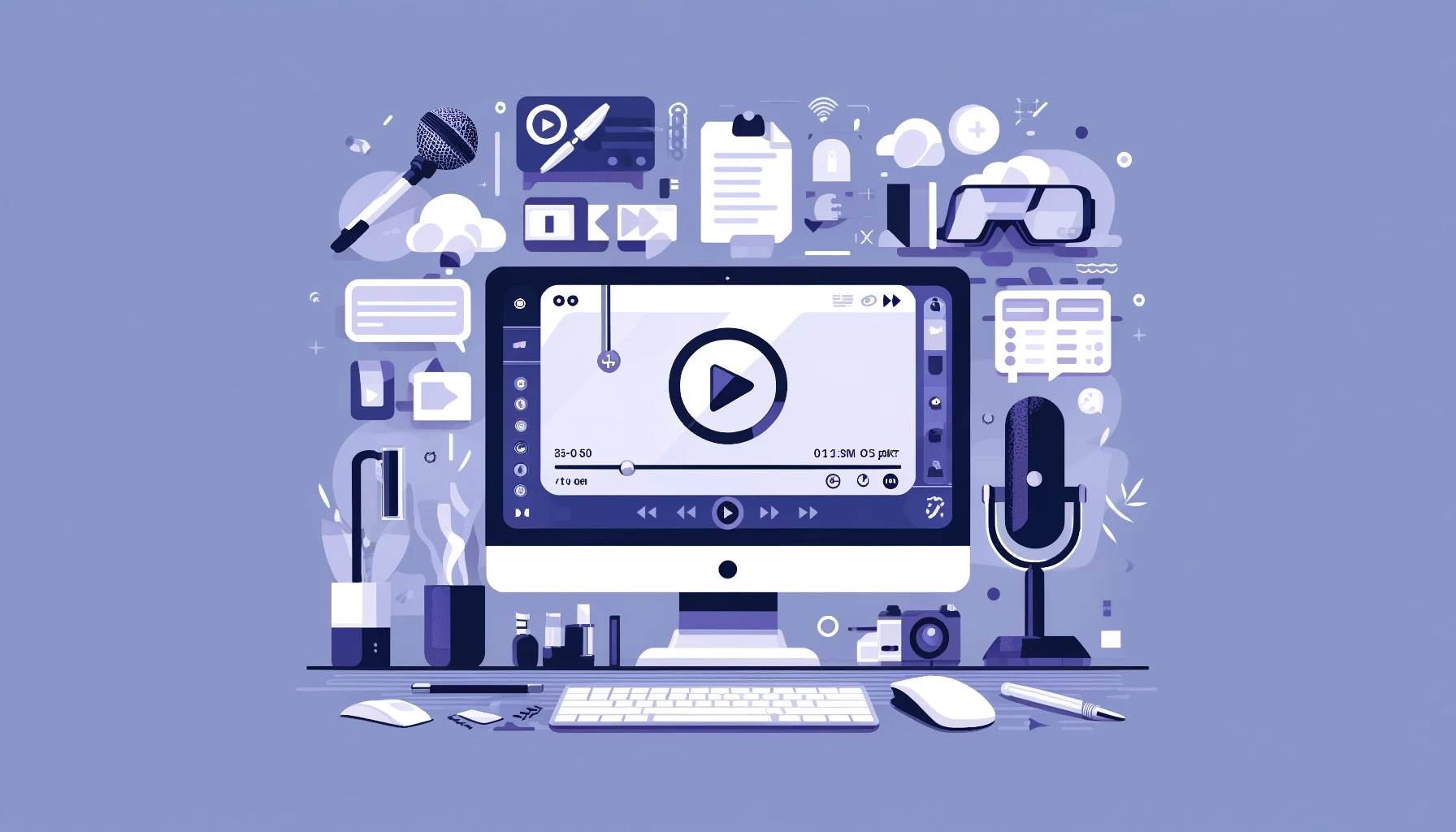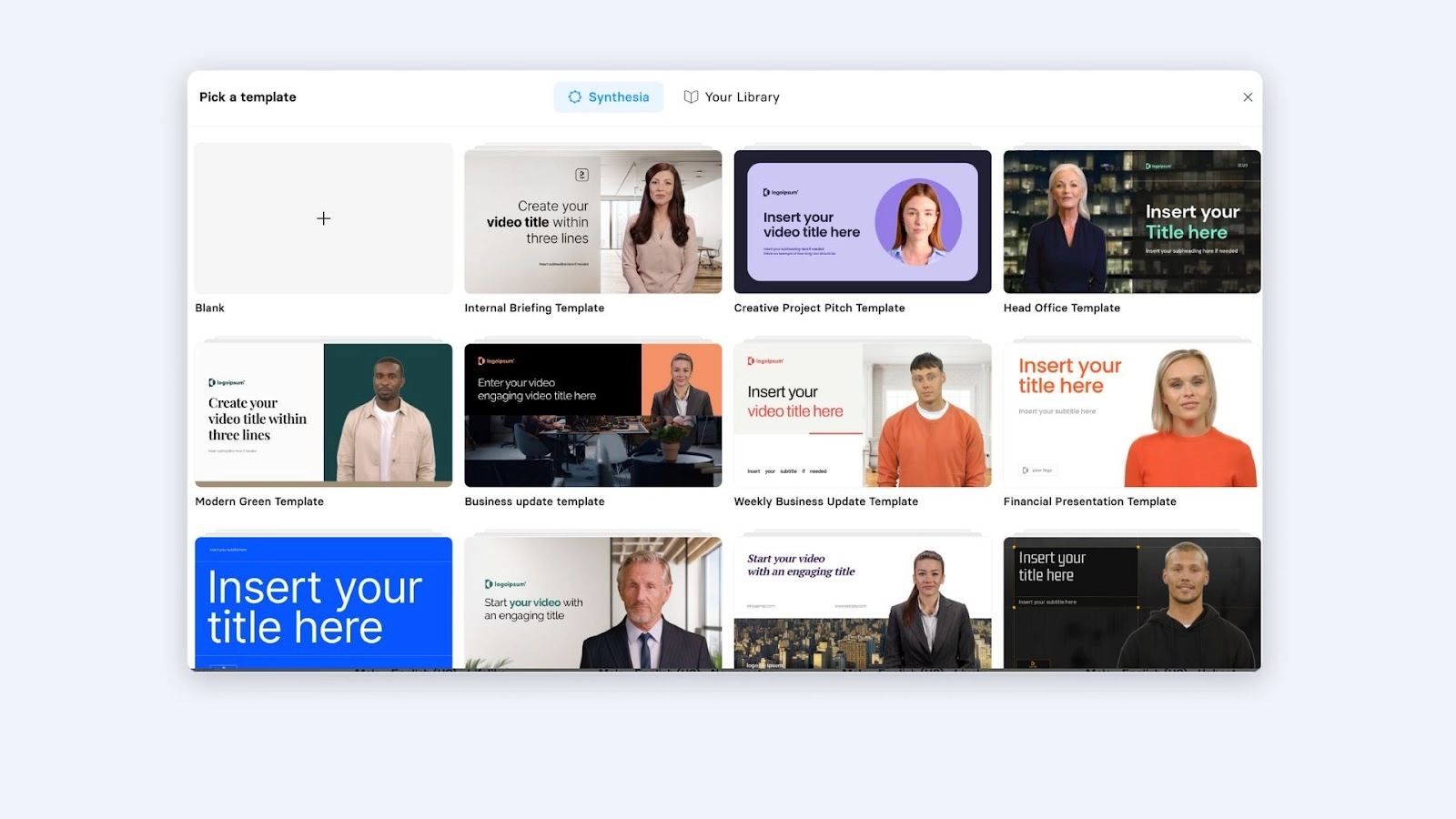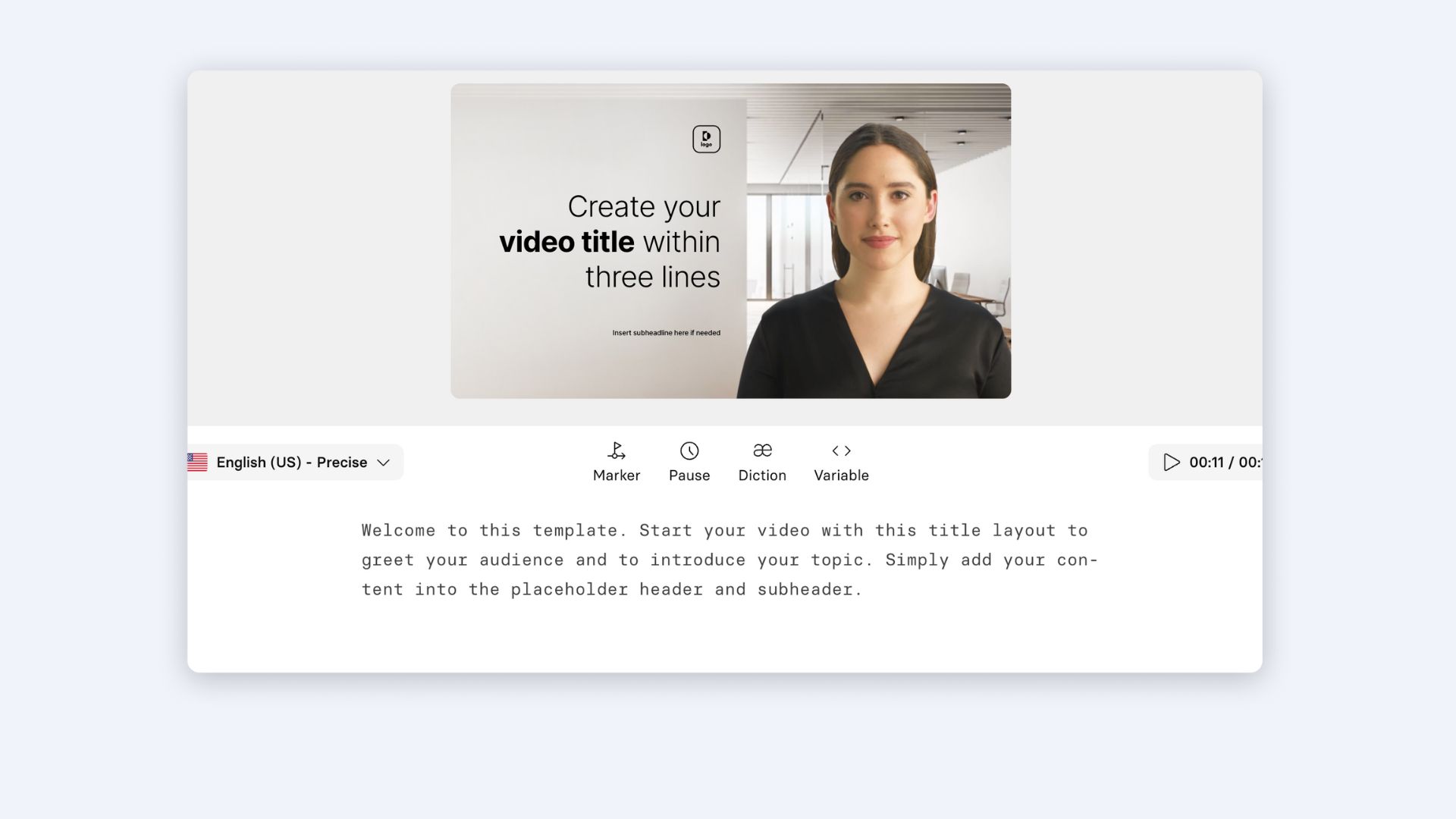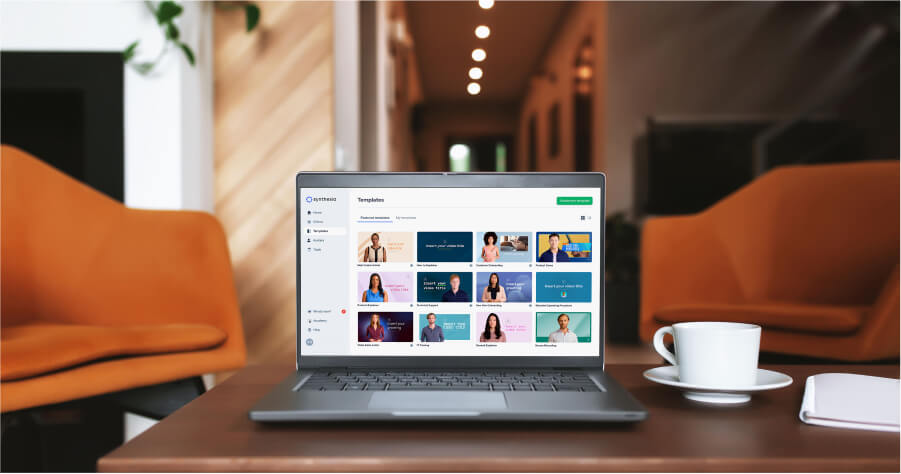How to Make an Instructional Video With Screen Recording


Turn your texts, PPTs, PDFs or URLs to video - in minutes.

People are hungry for information. But they don't want to spend days trying to understand it.
There's a whole load of evidence pointing to the fact that people not only find videos effective for education…. But they also find them engaging.
By the end of this post, you'll have all the info you need on how to make an instructional video with a screen recording that is concise and engaging. Let's jump in!
What is an instructional video?
An instructional video is a video that provides clear, concise, and visually engaging step-by-step instructions on how to perform a specific task.
Because this type of video explains or demonstrates a process, breaking it down into actionable steps, it can be used for various purposes.
From DIY tutorials to professional productions of extensive L&D courses, instructional videos can find their place in different contexts. Depending on the use case, an instructional video can be a simple screen recording or a high-budget video production supported by screen recordings.
Why use screen recordings in your instructional videos?
Adding screen recordings to instructional videos lets you show AND tell. Your audience will understand your tutorial video more easily and reach their learning objective faster. And you can do it to:
- Introduce someone to a new tool, making instructional videos with screen recording and explanatory audio.
- Teach viewers how to perform a task in an unfamiliar software, doing a demonstrative screencast yourself.
- Explain your thought process on a project, creating specific instructional content — this can be presentation slides you're showing and commenting on during the screencast.
- Walk your target audience through a performance report, sharing your screen and giving audio input.
- Provide quick feedback to work in progress, sharing your screen, microphone, and even webcam if your screen recording software supports this simultaneously.
Screen recordings let someone peek over your shoulder at your screen and show them how what you're saying ACTUALLY applies to a real situation.
Best types of instructional videos for screen recordings
Instructional videos help the audience learn how to do something by watching it.
In work environments, instructional videos with screen recordings are common because of the many computer tasks that are easy to demonstrate while performing and recording the screen. Here are some of the most common types of instructional videos:
1. Video tutorials
Video tutorials teach or explain a topic or skill by combining voiceover narration with visuals like slides, diagrams, and screen recordings. This type of video is used for educational and instructional purposes, and it's particularly effective for software training, digital tools, and any task performed on a computer.
The more complicated the topic, the more effective an instructional video with screen recordings can be. Viewers can watch it multiple times, pause when necessary, and try to replicate the steps shown as many times as they need.
2. Employee training videos
Employee training videos educate, inform, and train employees on various topics related to their job functions, company policies, and best practices. These videos can range from onboarding new employees and introducing a new software tool to teaching protocols.
Creating instructional videos with screen recordings when onboarding, upskilling, or reskilling your employees is particularly useful if the content relates to digital tools. The videos ensure every employee gets the same instructions and knows precisely what to do.
3. Product demos
Product demos show a product in action. If it's a digital product, creating an instructional video with screen recordings that show how to use it makes even more sense.
Once ready, the product demo video can go to your internal library for employees to access. Or you can publish it on your website's Help section for customers to better understand how to use it and troubleshoot the product if necessary.
4. Presentation videos
Presentation videos educate and guide users on their action steps. Plenty of L&D topics could benefit from instructional presentation videos with screen recordings, from software onboarding to cybersecurity practices and even remote work best practices.
How to make an instructional video with screen recordings in 9 steps
Follow the steps below to make an instructional video with a built-in screen recording.
NOTE: If you want a simple video with no extras, some of the following steps for making an instructional video with screen recording will not apply to you. Go ahead and take what you need — you’ll still end up with a valuable video!
Step 1: Know your audience
The greatest video you can create is one that’s relevant to your audience.
Before you plan your visuals and start recording, you must know how to formulate and position your message to your specific watchers. And to do that, you need to know what brought them to watch your video, their goals, and what they hope to get.
💎 Write down the answers to the following questions to define your audience:
- Who will watch your instructional video?
- Why are these people watching the video? What need or problem brought them to your recording?
- What does your audience already know about the topic you want to cover in this instructional video?
- What new information and how much detail do you need to provide for this specific audience when you begin recording?
- What does your audience need to know before moving on to the next step?
Step 2: Write your script
Plan your instructional videos in detail, and you'll make the actual production and video editing far faster.
Having a strategy for your instructional videos with screen recording gives you clarity and eliminates unnecessary stress when recording. Even a simple script will do it; no need to obsess over it.
One of the best ways to plan your video script is to write down a rudimentary storyboard like in the image below. There's no need to worry too much about design — this step is about your ideas and structure and can be as messy or neat as you like.

💎 Use the table or download a template with some built-in text from this collection of free video script templates and start writing your instructional script.
Step 3: Choose your screen recording software
Synthesia is your best option for making an instructional training video with screen recording. You can use its built-in screen recorder to work from scratch, doing video recordings of your computer screen. Or upload multiple recordings and edit them to serve your learning objective.
As a powerful AI video maker, Synthesia gives you all the tools to create instructional videos. Its key advantages are that you don't have to record your system audio, worry about background noise, or work on multiple monitors with fancy software. In the same environment, you get:
- Plenty of templates to customize in minutes with any video project, whether an online course or an instructional video tutorial.
- A built-in screen recording tool to make your own content and add it to any of the free templates.
- A powerful video editor that's easy to use even if you lack advanced video editing skills.
- 125+ diverse AI avatars in Synthesia's library for you to create a tutorial video without showing your face if you're shy on camera.
- AI text-to-speech function to generate a video narration in one of 120+ languages and accents.
💎 There are 60+ video templates available in Synthesia, with professional designs and fully customizable options. Select and duplicate a video template, and you'll create instructional videos in under 30 minutes. You can pick the one that best suits your instructional videos and use it as it is. Or you can start adjusting the video elements and produce a great screen recording on the spot to enrich the template.

Step 4: Prepare for the screen recording
Before you start recording, bring all video materials together. That way, you won't be rambling and looking for certain apps, folders, or files once you hit play on the screen recorder.
Having all your tools at hand will make you look professional. It'll help you record your tutorial videos without interruptions and without showing your audience private information from your computer.
💎 Create a folder and move every asset you need into it for easy access. Alternatively, open all software and tabs you'll need during your video recording and clear away unnecessary tabs and files.
Step 5: Record the screen with the in-app screen recorder
Record your screen while performing the action you want to demonstrate and include it in your instructional video.
Here’s a training video that will walk you through doing a screen recording in Synthesia:
💎 Add a screen recording to your video template by hitting the “Record” button in the top menu of Synthesia. You’ll be asked to choose what to record from several options — the entire screen, a specific window, or a browser tab. Select and start recording the video.
Step 6: Edit your screen recording
Once you stop recording, it's time for video editing.
The recorded video content is added to your template and saved in your library for future use. All you have to do is drag and drop that video into your slide in Synthesia.
💎 Edit your screen recording video on the spot with the trim, cut, loop, and stretch editing functions.
Step 7: Add graphics
Customize the video template by uploading your brand assets, such as your logo and colors, and set your fonts.
Synthesia also has 125+ human-looking AI avatars you can pick from. Select your favorite and adjust its sizing over your screencast.
💎 Once you’ve finished tweaking all your extra video elements, double-check that transitions are smooth and error-free.
Step 8: Generate the text-to-speech narration
Text-to-speech narration uses advanced AI algorithms to turn text into spoken audio. It analyzes the text — words, syntax, punctuation, emphasis markers — and generates a corresponding synthesized voice that sounds like a human and makes your instructional videos more engaging.
💎 Copy your text script and paste it into the text box in Synthesia. The video editor automatically recognizes the language. Leave the default or select a voice from the drop-down menu in the top-right corner of the script box. You can also set a preferred accent, dialect, locale, and voice style.

Once you’ve generated the narration, play your video and pay close attention to the timing of the animations. You want to ensure they're in sync with the audio.
Step 9: Generate your instructional video
Synthesia lets you preview, duplicate, download, share and embed your videos online.
You can download your instructional video in MP4 format and then upload it anywhere. Or you can enable video sharing in your Synthesia account and copy the shareable link to paste it anywhere else — in an email, on your internal messaging app, on social media, etc. But first, generate it.
💎 After you've added the language, hit play to watch a preview, and if everything looks good, hit the "Generate" button. You'll have your video ready for sharing in a few minutes!
4 tips for making instructional videos with screencasts
Follow these tips during your video production and you'll be making professional-looking videos in no time.
1. Plan ahead and outline your video
Instructional videos with screen recordings are a more passive experience for viewers. If your audience will only sit and watch, ensure you have a clear action plan that provides value and keeps them glued to your instructional video.
Before you start your new recording, outline the video and get clear on the main learning objective. Organize your desktop so that it's clutter-free and you're only showing content that's relevant to the topic. Consider using video templates that space out your recordings to make the instructional more engaging.
2. Set a comfortable pace to engage your audience
Speak clearly and at a comfortable pace so your audience can easily follow along. Highlight essential points using visuals like arrows, captions, or cursor tracking. And if you're using keyboard shortcuts to make the presentation smoother, explain to your audience how you're instantly accessing those functions and commands.
3. Provide clear narration
The quality of your instructional video's narration will impact the viewers' experience and how much they understand from your screen recording. Invest in a good microphone and use a pop filter to reduce unwanted noise. To save time and keep the quality high, use a text-to-voice tool that'll quickly generate a professional voiceover.
4. Pause when you stumble or mumble your words
Narrating your screen recording can make you stumble at certain times. When you make a mistake, stop talking for a few seconds and then repeat at your own pace from where you've left. These pauses will be easy to cut out during editing.
Make your first instructional video in Synthesia
Now that you know how to make an instructional video with screen recording, you'll be happy to find that Synthesia can help you start recording as early as today. It gives you everything you need in one place.
Try the free AI video creator to see how easy it is to copy and paste content and generate your own videos in minutes.










